The age-old debate of whether to use paper or plastic. Each has advantages and disadvantages, and the best option for a company will be determined by the application. Plastics are extremely convenient and easy to manufacture, yet paper is frequently promoted as an environmentally benign option. However, this subject is more complicated than it appears.
Many businesses are transitioning to paper packaging rather than plastic packaging in order to be more environmentally friendly, especially with the new plastic tax set to take effect in 2022. The question of whether paper packaging is better for the environment than plastic has been debated for years. While most people believe that paper products are better for the environment since they are manufactured from renewable resources, the argument that paper is more sustainable than plastic is not so simple. Is paper packaging better than plastic packaging?
Some of these misunderstandings stem from a failure to examine the bag’s whole life cycle. It’s not just about how bags are disposed of or how long they take to disintegrate; other factors have an impact on the environment as well. In this blog today we will discuss paper packaging vs plastic packaging.
Plastic Packaging
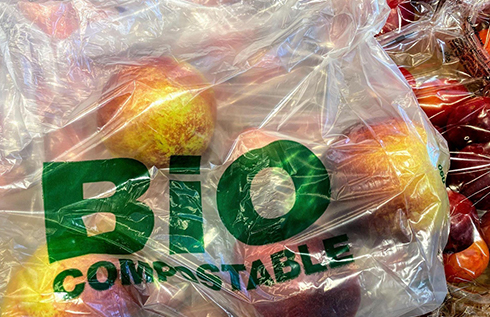
Plastics were accidentally invented in 1907, but they became widespread in the 1950s when high-density polyethylene was developed. Plastic is created from fossil fuels, which are obviously non-renewable. Plastic is predicted to use 4% of the world’s oil production as a feedstock, making it a low-renewability and low-sustainability material.
The difficulty is that we have become so reliant on plastic in modern life that it may be impossible to totally eliminate it due to the benefits it provides. To demonstrate their dedication to the environment, several firms are aiming to move from plastic to paper packaging. Before completely abandoning plastic, firms will analyze the advantages and disadvantages of each material to determine which will give a more environmentally responsible packaging solution.
Pros of Plastic Packaging
Plastic packaging, contrary to popular assumptions, is not always the worst environmentally friendly option. Plastic is often stereotypically seen as environmentally unfriendly, unbreakable, and polluting the lovely earth we live on. In truth, plastic offers some advantages that other environmentally friendly materials, such as glass, do not.
- The primary benefit of plastic packaging is its low cost. Plastic can be made rapidly and inexpensively, which is why it became such a popular packaging material around the world.
- Because plastic packaging is lighter, it makes transportation and handling processes easier. As a result, fuel consumption is lowered, emissions are reduced, and total costs are reduced.
- Plastic is an excellent alternative for preventing corrosion as well as heat and electricity conduction. Special bags are provided for things that are very delicate, such as electronics, and those that require hygienic handlings, such as food, medications, and medical devices.
- They may be packaged and sealed without the need for human interaction, resulting in products that are safe and contaminant-free.
- Improved barrier technologies also enable the use of plastics for liquids, extending the shelf life of many food items.
- While recyclability varies by plastic, many may be recycled up to ten times before losing quality, which is excellent for the environment and for people who wish to help.
Cons of Plastic Packaging
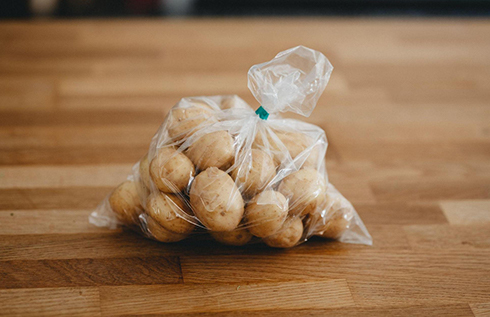
Plastic packaging is rapidly being highlighted for its negative environmental effects. Many countries and regions have taken action to ban the sale of lightweight bags, charge customers for lightweight bags, or generate taxes from the stores that sell them, restricting people from using disposable plastic bags as recklessly as before. Some states in the United States, for example, already have banned single-use plastic bags. In August 2014, California became the first state to enact legislation imposing a statewide ban on single-use plastic bags at large retail stores. Here are some disadvantages of plastic bags.
- Single-use plastic packaging is extremely polluting because it takes thousands of years for plastic to biodegrade.
- Even recyclable plastic packaging frequently ends up in the garbage, especially in the UK, where recycling capacities vary from county to council.
- When plastic degrades, little plastic molecules produce chemicals that can poison the soil and make local land unfit for farming. These compounds can also contaminate streams, causing harm to fragile ecosystems.
- The majority of plastic is produced as inexpensively as possible in facilities located in underdeveloped countries with lax pollution controls. Many of these firms also discharge toxic waste and manufacturing by-products into local bodies of water, releasing large volumes of carbon dioxide into the atmosphere.
- While recycling is a considerable benefit, it is a time-consuming procedure that does not work with all plastics. Food residue can very easily contaminate plastics, rendering them unrecyclable.
- Because plastic packaging has a low melting point, it can be destroyed if placed near a heat source, and therefore may constitute a fire hazard in some applications.
- Plastic packaging is also noted for its lack of protection; for example, airbags convey shock within the package rather than absorbing it. It was also shoved to the bottom of a crate during transit before bursting on impact, rendering it unusable.
Common Plastic Material for Food Packaging
Food and beverage regulatory organizations demand the use of food-grade materials at every point where the material may come into contact with food. These requirements apply to packaging as well, leading to the creation of food-safe plastics for use in the packaging of consumable goods.
- PET stands for polyethylene terephthalate, and it’s found in soft drink and single-use water bottles, and also food-grade containers, bakery trays, snack packs, produce containers, and more. PET resin is a common choice for food packaging since it does not deteriorate when exposed to food. Lightweight, great impact resistance, and corrosion resistance are just a few of PET’s major advantages.
- Crystallizable Polyethylene Terephthalate (CPET) has undergone a treatment to make it more resistant to cracking when subjected to low-temperature impacts, which is a typical flaw in some regular PET plastic containers. Because CPET is more flexible and can tolerate higher temperatures, it’s ideal for making plastic food trays for conventional ovens, microwaveable dinners, oven-safe plastic wrap, microwaveable storage containers, and more. CPET is also frequently utilized in ready-to-eat meals.
- Polypropylene is an excellent food-safe material for high-heat industrial procedures. It can be found in a variety of things, including medication bottles, gardening tools, and automobiles. Polypropylene is not as fragile as other typical food packaging polymers, despite its stiffness. Polypropylene is used in the packaging of yogurt, cream cheese/sour cream jars, ready-to-eat meals, and VSP containers. Because of its high melting point, polypropylene has become popular for microwavable containers.
- Another commonly used plastic packaging is plastic foil. The lidding film, shrink wrap, VSP film, stand-up pouches, and specialty bags are some of the most popular constructions. LDPE is the cheapest plastic film material. It is flexible, flexible, transparent, and has high resistance to moisture, tear, and chemicals. It’s most commonly used in plastic bags, or in squeezable food bottles, baked goods, and frozen food packaging.
- PVC is a kind of inexpensive and widely used thermoplastic. It can be formulated as rigid packaging boxes or flexible packaging bags, with high impact strength, good dimensional stability, and is oxygen permeable. PVC is loved by food packaging companies and brands. It is also free to print customized logos or patterns on PVC materials. PVC is often used in food and drink tubing and in the packaging of mints or chewing gum.
- High-density polyethylene (HDPE) is commonly used for food packaging in juice and milk cans, containers for squeezing butter and vinegar and chocolate syrup, and for grocery bags. It is translucent and solvent resistant. HDPE is one of the least flexible and strongest types of polyethylene film, making it ideal for applications where shape needs to be preserved.
Paper Packaging
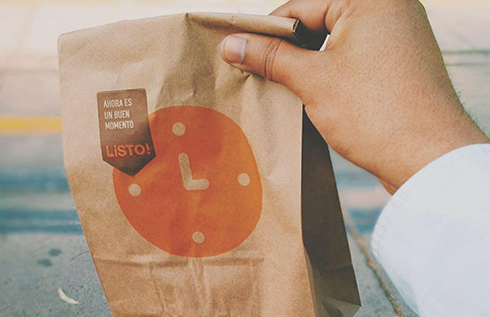
Paper is still one of, if not the most prevalent, kind of packing material used around the world. Many businesses are converting to paper because it is more environmentally friendly, as it poses less of a hazard to the environment if any ends up in the ocean or waterways. Not only that, but starting in 2022, any plastic container containing less than 30% recycled content will be subject to a £200 per tonne tax, putting even more pressure on firms to decrease their usage of plastic. For a deeper look into eco-friendly alternatives, refer to Eco-Friendly Takeout Container: Make Business Greener.
Pros of Paper Packaging
Paper packaging has a longer history than plastic packaging, and it has a more appealing aesthetic with less safety and environmental problems. Many things that are packaged on-site, such as restaurant take-out and grocery items, are bundled in the paper.
- When compared to other types of packaging, particularly plastic, the paper has a faster biodegradation rate. When exposed to bacteria, yeast, and other organisms in natural conditions, paper wrapping degrades quickly.
- Paper packaging, unlike its plastic equivalent, does not harm the environment. Unlike many types of recyclable plastic, paper packaging can be 100% recyclable and is simple to recycle for customers. Packaging can easily be disposed of in household recycling bins.
- Because paper packaging is made from natural materials, there are no hazardous, carbon-emitting manufacturing processes involved. Paper packaging goods are made using paper from FSC-certified forests that are managed sustainably, guaranteeing that excessive deforestation has no negative influence on the environment.
- Despite the fact that paper packaging is at first more costly than plastic packaging, firms may find it to be more cost-effective in the long term.
- Paper packaging is also a fantastic approach to communicating your company’s values. With more people looking for ethical ways to spend their money, promoting your business as environmentally friendly might help improve sales.
- Paper is not only more recyclable than other materials, but it is also easier to reuse and has a lower environmental impact. This is due to the fact that it may be re-pulped without using chemicals. Paper has a long life cycle, too: recycled paper fibers can be utilized to manufacture new products up to five or seven times.
- Because you can quickly put your logo or other graphics directly on the cloth, paper is ideal for brand visibility.
- Paper may readily be used with different materials to create unique aesthetics that impact purchasing decisions.
Cons of Paper Packaging
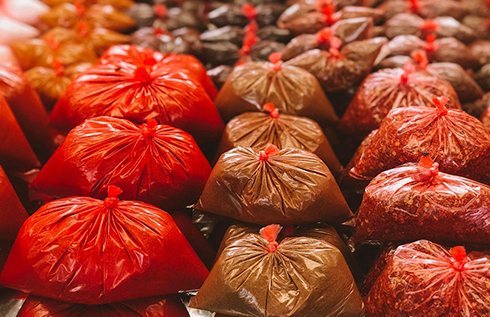
- Some paper packaging is less durable than plastic packaging, especially for low-quality products.
- Other packaging materials, such as plastic, provide less of a barrier to air, light, and microorganisms than paper. As a result, when stored in primarily paper packaging, the commodities it houses – particularly food products – have shorter shelf lives. (To improve the barrier qualities of paper, plastic is frequently placed in the plastic layers of laminates.)
- Paper packing can be more expensive than plastic packaging.
- Because cardboard cannot support as much weight as plastic, it cannot be stacked as easily without breaking.
- Paper bags use five times as much energy as plastic bags, use 20 times as much water, and weigh five times as much, resulting in higher greenhouse gas emissions throughout transportation.
- Because paper is less thick than other types of waste, it takes up more room in landfills than the same-weight plastic. 1 pound of paper, for example, takes up more room in a landfill than 1 pound of food waste, glass, or even some plastics.
- Other often misunderstood disadvantages of the paper include water-intensive production, paper strength, deforestation, and transportation weight.
Common Paper Material for Food Packaging
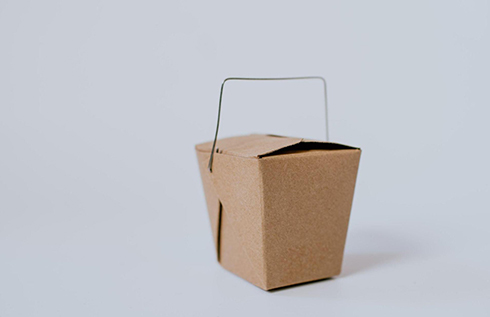
Green paper packaging is now again widely employed in people’s daily lives, thanks to government regulations and the rising influence of health and environmental protection. Food-grade paper packaging applications, such as food packaging bags, are common, ranging from oil-proof paper bags and snack bags in food booths to food packaging, paper mats, and take-out bags, among other things.
- Kraft paper is formed of softwood pulp, and it is denser and typically yellowish-brown in color, however, it can also be light brown, cream, or white. It’s mostly used to package paper bags, envelope bags, portfolios, medical records bags, and other ecologically friendly paper bags,paper food takeout containers, chestnuts, and other dried fruits for stores.
- White cardboard is a completely sized single or multi-layer combination created from bleached chemical pulp. The white cardboard has a smooth surface with a solid feel. In the domestic market, imported white cardboard currently has a considerable market share. High-end elegant wallets, bags, gift boxes, business cards, and other items are generally made of white cardboard.
- Copperplate base paper and paint are the primary raw components for coated paper. The pigments, adhesives, and auxiliary materials are combined to form coatings, which are then applied to the surface of the paperboard using special equipment, dried, and calendered. The surface is smooth and clean, the printing performance is good, the thickness is 70250 grams, and it is primarily used for cigarette cases. Labels, containers, and so on.
- Offset paper has a white and smooth surface, but it lacks the whiteness, tightness, and smoothness of coated paper. It can produce monochrome or multicolored book covers, texts, inserts, pictorials, maps, posters, and color trademarks. In recent years, numerous packaging products have also been employed to manufacture non-demanding dry fruit packaging bags, such as chestnuts.
- Greaseproof paper, as its name implies, is impermeable to fat and oil. It is often used to wrap food such as sandwiches, desserts, cheese, baked goods, and cold meats. The greaseproof paper is made with a small number of pores connecting the fibers to each other, making it difficult for liquids to pass through the greaseproof paper. This is an ideal material for wrapping fried foods and packing food to go.
Plastic vs. Paper – Safety
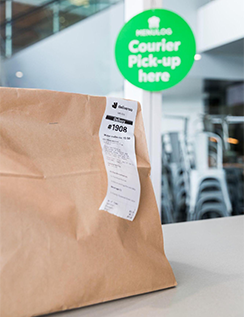
Plastic is an issue because it is dependent on unsustainable petroleum production – plastic is made primarily from petroleum, but it is also increasingly coming from natural gas production. The issue is compounded by the fact that plastic never goes away, accumulating in landfills, waterways, and other places.
Furthermore, certain plastics, such as polystyrene, which is used in many forms of packaging, including coffee cup lids, create a variety of health concerns when it leaches into the food or drinks it transports and has health consequences. Bisphenols, including bisphenol-A, per- and Perfluoroalkyl and Polyfluoroalkyl Substances (PFAS), and phthalates are the most dangerous compounds.
Due to their eco-friendliness, paper and paperboard-based material are one of the earliest and most widely used packaging forms for food goods such as milk and milk-based products, beverages, dry powders, confectionery, bakery products, and so on.
During the development of the paper, many harmful chemicals such as printing inks, phthalates, surfactants, bleaching agents, hydrocarbons, and others are added, which leach into the food chain during paper manufacture, food intake, and recycling through water discharges.
To prevent sogging from oil, grease, or any form of moisture, paper fiber food packaging, such as corrugated, is frequently coated with plastic and additives such as perfluorinated compounds (PFCs). However, these components make recycling impractical and expose food to infection.
Plastic vs. Paper – Sustainability
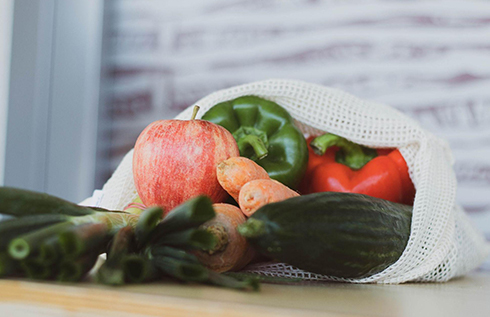
While many customers believe that paper is the most environmentally friendly packaging, the reality is more complicated and requires considering the product’s whole life cycle. This bad reputation of plastic packaging is what pushes plastic behind in the plastic vs paper packaging.
Making paper uses a lot of energy and water, and it produces a lot of waste and greenhouse gases, so it’s more harmful during the manufacturing process. Paper, on the other hand, is created from renewable resources, whereas plastic is made from a finite resource, oil. However, just 4% of fossil resources are used to make plastics, and other resource demands, such as electricity and water, are greatly decreased.
When it comes to recycling a plastic or paper bag, the Environmental Protection Agency (EPA) says that paper is considerably more likely to be recycled than plastic, with roughly two-thirds of paper bags making it to the recycle bin compared to only 5% of plastic bags. Paper is also less prone to contamination, making it easier to work within the recycling plant. Even Nevertheless, plastics recycling and techniques of production are always improving in order to get better results.
Because neither material is ideal, and many of the perceived advantages of paper bags are countered during the manufacturing process, the subject of sustainability is still up in the air.
Plastic vs. Paper – Cost
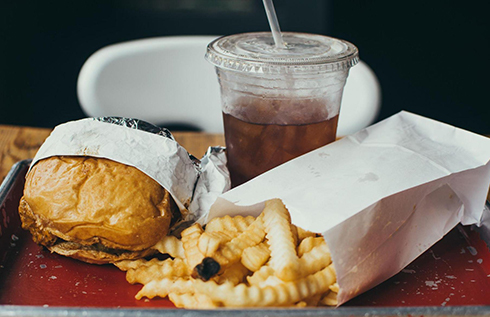
In terms of energy and water, the production of paper bags is far more resource-demanding. A paper bag uses around 10% more energy and 4 times the amount of water to make than a plastic bag. Aside from environmental concerns, paper products are frequently more expensive than plastic. Paper straws can range in price from 5 to 12 cents per unit, whereas plastic straws are a little under 2 cents.
Paper is also thicker and takes up more space before it reaches the user, making transportation more expensive. To put it another way, it takes seven trucks to transport two million paper bags, but just one truck to transport the same amount of plastic bags.
Several large retailers, including Tesco and Walmart, have already stated that they will limit the quantity of plastic packaging in which they sell their items. Along with Coca-Cola, Pepsi, Unilever, Nestle, and L’Oreal have vowed to make all of their packaging reusable, recyclable, or compostable by 2025.
Despite these commitments, most of the food and beverage business is still figuring out how it will fulfill the goals it helped set and their views, on the whole, why is paper packaging better than plastic debate. Some experts believe that if we don’t take the appropriate method to get rid of plastics from our shopping carts, we’ll end up paying more for our purchases.
Key Takeaway
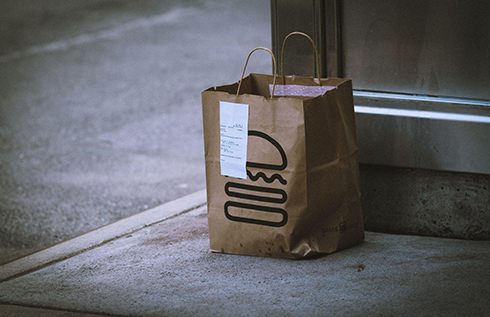
The debate of paper vs plastic packaging encompasses a wide range of characteristics, so which one is best for you is determined by your needs. Plastic is generally the ideal choice if you’re working with a product that requires certain hygiene requirements or resistance to corrosion, contamination, or static electricity. It will be more adaptable and cost-effective, which will benefit small firms and small-scale exports.
A paper bag can be a viable option if the price isn’t an issue and you don’t need waterproofing. It’s also beneficial if you’re seeking a way to promote your company. It all comes down to what you’re delivering and how weighty the content is at the end of the day. Because paper packaging can be reused, it can be a very cost-effective alternative.
They are also more environmentally friendly than plastic alternatives. However, stacking issues may arise, especially if the package is unable to support the weight of the contents. It’s also vulnerable to liquid harm, with water seeping inside the box and causing damage to the contents.
Discover the Top 6 Manufacturers Takeout Containers Wholesale for Your Business Needs.







